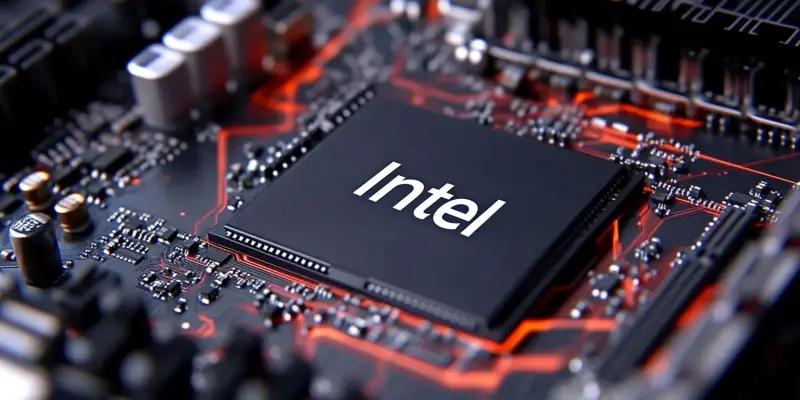In the rapidly evolving world of technology, Intel’s upcoming Panther Lake-H series CPUs are generating significant buzz, promising major advancements in both power and graphical performance set for release in late 2025. As Intel continues to push the boundaries of what mobile CPUs can achieve, the Panther Lake-H series, also known as Core Ultra 300, stands at the forefront of this exciting evolution.
Configurations and Core Dynamics
The Panther Lake-H series will be available in three distinct configurations, each tailored to meet different performance needs. The highest-end configuration, featuring 4 Performance cores, 8 Efficient cores, and a substantial 12 Xe3 integrated graphics cores, is poised to deliver a considerable boost in graphical performance. Meanwhile, the other configurations will offer varying balances of Performance, Efficient, and Xe3 iGPU cores, ensuring a diverse range of options for users based on their specific demands. This variety emphasizes Intel’s commitment to providing customizable solutions that cater to both power users and mainstream consumers alike.
Power Consumption and Performance Capabilities
One of the most critical aspects of Panther Lake-H CPUs is their impressive power consumption and performance capabilities. Operating within a power range of 25 to 64 watts in Performance mode, these processors mark a significant increase from Intel’s previous Lunar Lake series, which had a power range of 17-30 watts. The Base frequencies (PL1) range between 15 and 25 watts, while the Max Turbo Boost frequencies (PL2) extend up to 64 watts, with occasional boosts provided by PL3 and PL4 levels for short periods. These specifications suggest a substantial enhancement in performance, especially for applications requiring intensive graphical processing.
Graphical Performance and Efficiency
The most powerful variant of the Panther Lake-H series, equipped with 12 Xe3 cores, is expected to deliver unmatched graphical performance, setting a new standard for mobile computing and gaming. The detailed power configurations provide a clearer picture of this potential:
- 4+8+12Xe: Base (PL1) at 25W, Max Turbo (PL2) up to 64W
- 4+8+4Xe: Base (PL1) at 25W, Max Turbo (PL2) up to 64W
- 4+0+4Xe: Base (PL1) at 15W, Max Turbo (PL2) up to 55W
Such enhanced graphical capabilities, combined with improved power efficiency, make these CPUs well-suited for a variety of portable devices, including gaming handhelds, ensuring both high performance and prolonged battery life.
Targeted Applications and Market Impact
Intel’s Panther Lake-H series aims to make a significant impact on the mobile platform market, particularly within the gaming and high-performance computing segments. The increased power efficiency, combined with robust graphical capabilities, positions these CPUs as ideal candidates for portable gaming devices and other high-demand applications. This strategic move underscores Intel’s focus on advancing mobile technology, ensuring users can experience top-tier performance while on the go.
Anticipated Advancements
In the ever-evolving landscape of technology, Intel’s forthcoming Panther Lake-H series CPUs are generating considerable excitement. These new processors, slated for release in late 2025, promise significant advancements in both power and graphical performance. The Panther Lake-H series, also referred to as Core Ultra 300, represents Intel’s latest effort to push the boundaries of mobile computing capabilities.
With the tech industry continuously advancing and consumer demands growing, Intel’s focus is on delivering cutting-edge performance improvements. This upcoming series is expected to set a new standard for mobile CPUs, offering enhanced speed, efficiency, and graphics. As Intel builds on its reputation for innovation, the Panther Lake-H series is positioned to be at the forefront of technological evolution, ensuring that users experience unprecedented levels of performance. The anticipation surrounding these processors highlights the ongoing quest for superior computing power and the commitment to pushing technological limits in the mobile CPU market.

